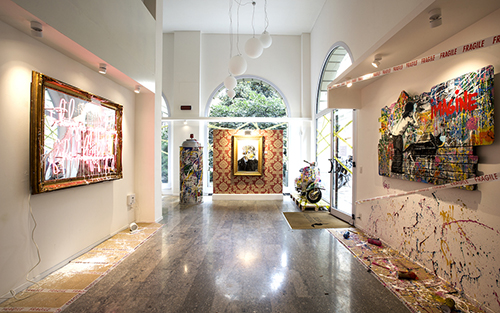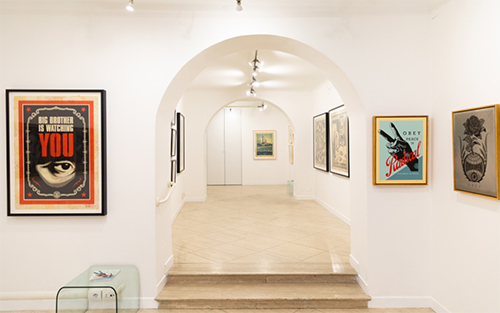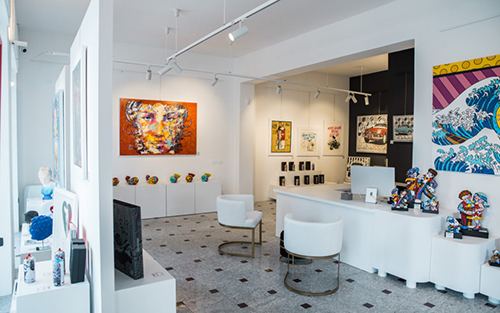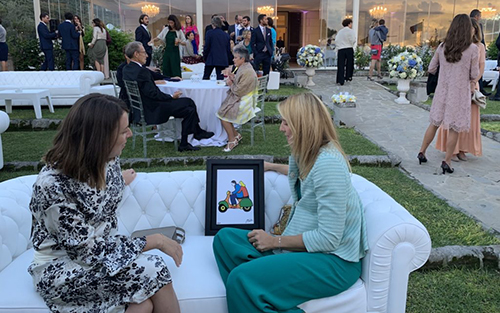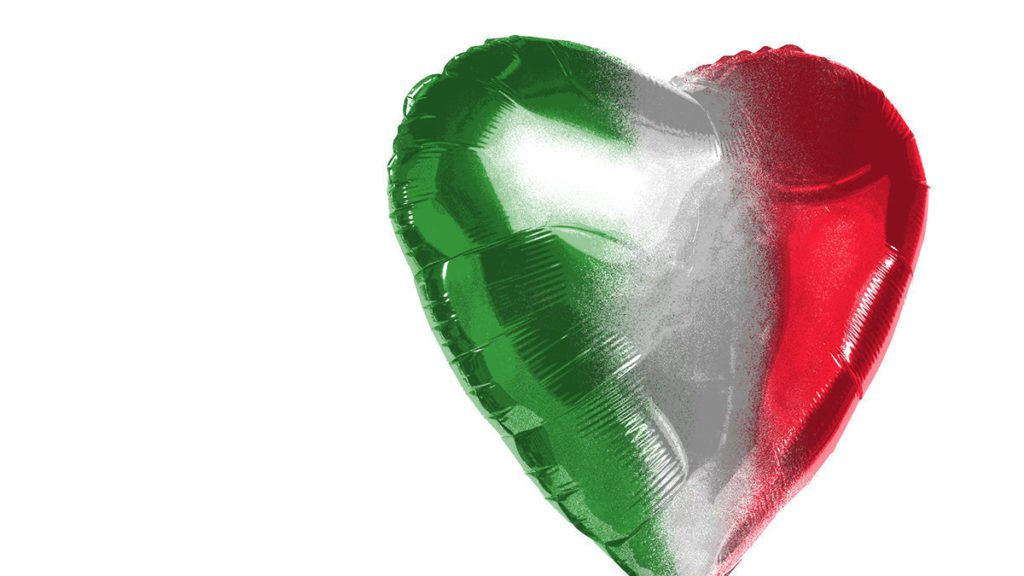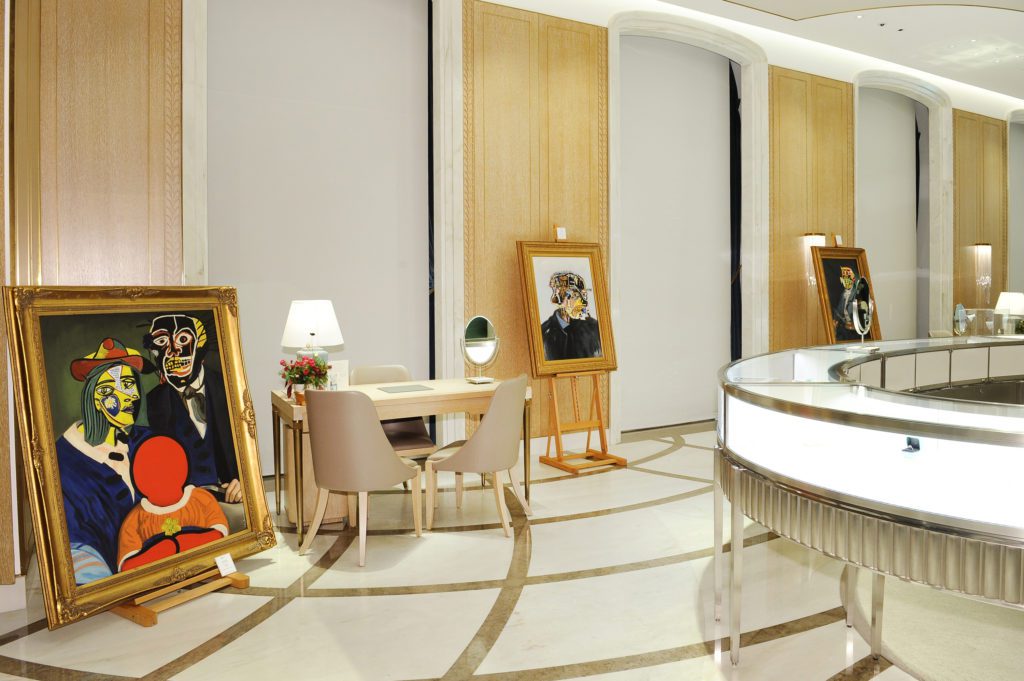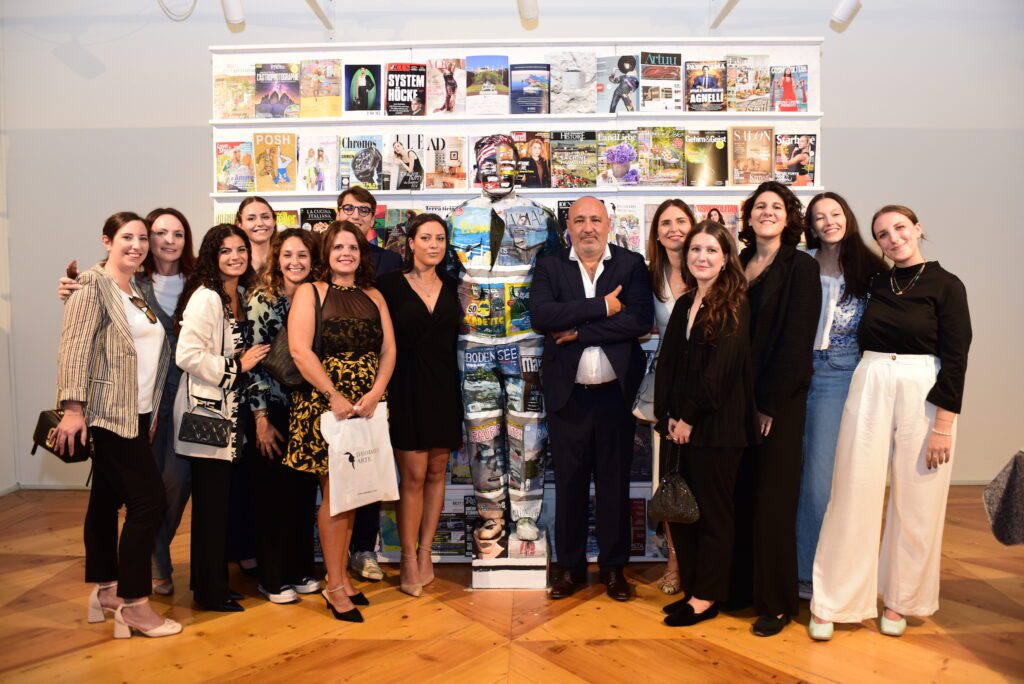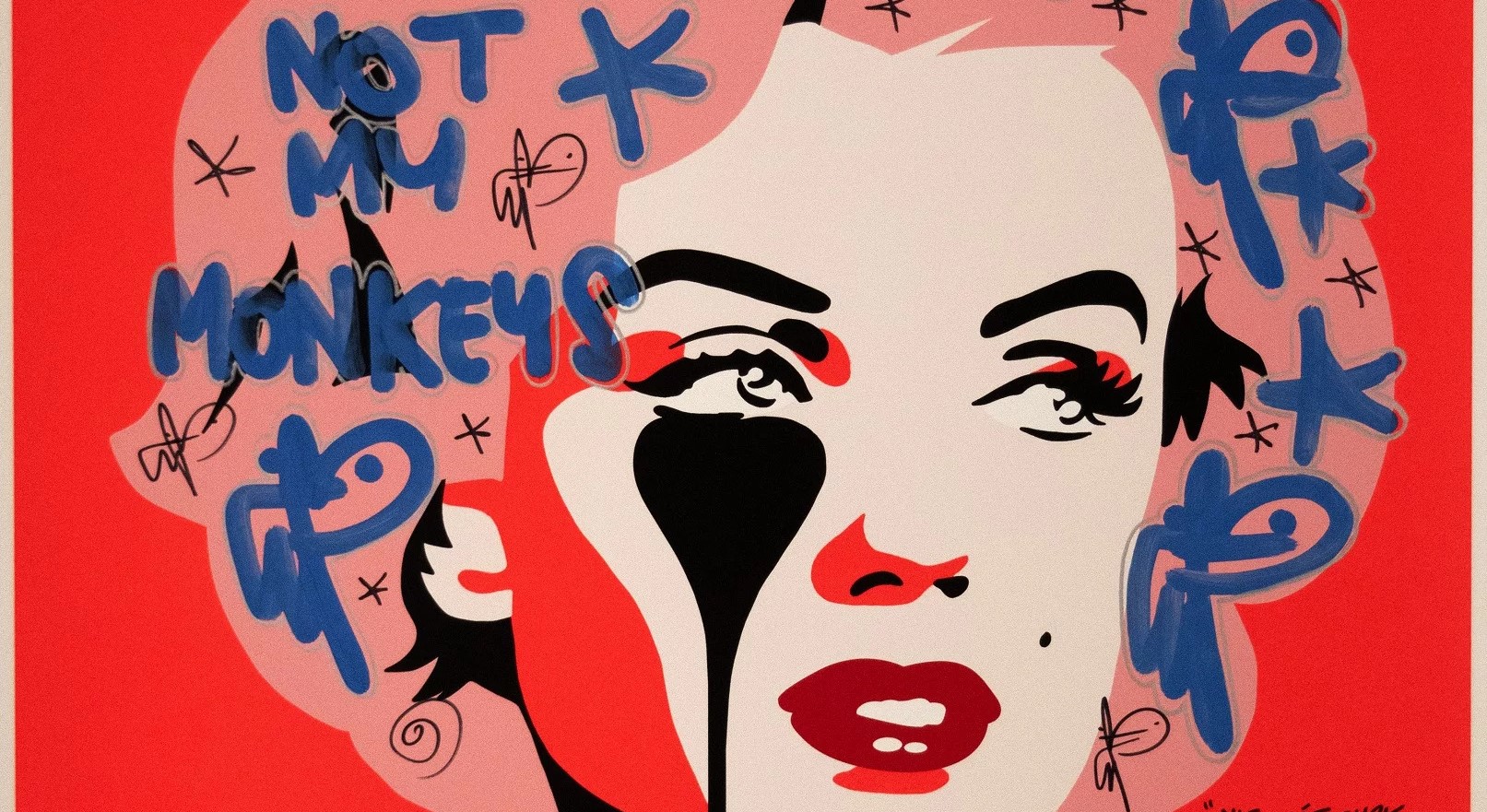
The exhibition will continue until October 15, 2022
Wunderkammern is pleased to present Pure Evil‘s solo exhibition Not my circus, not my monkeys at its Milan venue in Via Nerino 2.
Book your visit!
The show of English artist Charles Uzzell Edwards, aka PURE EVIL, titled Not my circus, not my monkeys inspired by an obscure Polish expression, showcases the artist’s most famous series: Nightmare. For the first time in Milan, an exhibition of works on paper, canvas and perspex depicting Hollywood stars and celebrities with their faces marked by a characteristic, dark tear. Among them will be the work Arthur Miller’s Nightmare – Not my circus, not my monkeys, the portrait of Marilyn Monroe that gives the exhibition its title; in addition, a limited edition of NFT works will be presented.
The Nightmare series takes its inspiration from the 1960s, the golden age of American and European cinema, which was going through a great artistic ferment. Actresses such as Marilyn Monroe, Elizabeth Taylor, Natalie Wood and Sharon Tate were at the height of their success, while the Pop Art of Warhol and Rosenquist investigated celebrity culture, advertising and marketing.
There are three main suggestions that led the artist to the conception of the Nightmare series and the Milan exhibition. The first are the books dedicated to Pop Art and Andy Warhol’s diaries that Pure Evil used to leaf through in his father’s library, fascinated by Warhol’s almost maniacal obsession with creating countless versions of celebrity portraits. The second was an e-mail received from a Chinese copy villagewith an attached catalogue of all the artworks available for reproduction and immediate purchase. Among them were three works by Andy Warhol: a portrait of Liz Taylor, one of Jackie Kennedy and an electric chair. Capturing the irony of reducing the entire career of an artist like Warhol to three endlessly reproducible and cheap subjects, Pure Evil first thought of turning himself into a copy village. Finally, the last source of inspiration is the movie “Who’s Afraid of Virginia Woolf?”, a cinematic reinterpretation of Edward Albee’s famous play directed by Mike Nichols, in which Liz Taylor and Richard Burton bring a couple’s ruthless game of massacre, amid alcohol abuse and bourgeois dissatisfaction, to the big screen. The film deeply surprised the Welsh artist, who in 2011 made one of the first subjects of the Nightmare series: Richard Burton’s Nightmare – Liz Taylor. Pure Evil immortalises on a canvas and in a two-colour print the face of the actress concealing the suffering of a complicated love on set and in real life. Only two months after the work was created, in March of the same year, Liz Taylor lost her life and sales of Pure Evil’s work skyrocketed.
“I kept this whole collection of paintings very simple – Pure Evil says. The features of the women are simplified down to the most basic lines possible, cut by hand into three stencil layers with a sharp blade, and laboriously sprayed to build up the faces. The eyes drip painted tears, the product of broken dreams of love”.
“A few days after the death of Claes Oldenburg, one of the last great pioneers of American Pop Art (remains Jasper Johns who is currently 92 years old), it is clear that the message conceived in the exciting post-war years is still as relevant today as ever – states Marta Silvi in her critical text. Spread and camouflaged in the contemporary world, many artists have perpetuated its revolutionary scope by evoking or reinterpreting it. Among them Pure Evil, born Charles Uzzell Edwards, who was born in South Wales, right in the United States appropriated the pop message melting it in the street language and systematized it, once back in London, in a real commercial gallery in Shoreditch that bears his name. In The Nightmare Series Pure Evil draws from the set of icons dear to the pop imaginary (the divas, the influential and damned characters of Warholian obsessions) to temper their solidity in a simplification of somatic features and subtle silhouettes, but filled with the tears of broken desires.”
Pure Evil with the Nightmare series only seemingly embraces celebrity culture, looking at these film and music icons with a disenchanted and melancholic eye. Despite their success, their lives are laden with pain and torment, which the artist encompasses in a tear.
Info
Curated by Giuseppe Pizzuto
Critical essay by Marta Silvi
Wunderkammern Milan, via Nerino 2
From Monday to Saturday, 10am-2pm / 3pm-7pm
Partners
Media Partners: Artuu, Collater.al, FACE Magazine
Technical Partners: Abbazia di Busco

